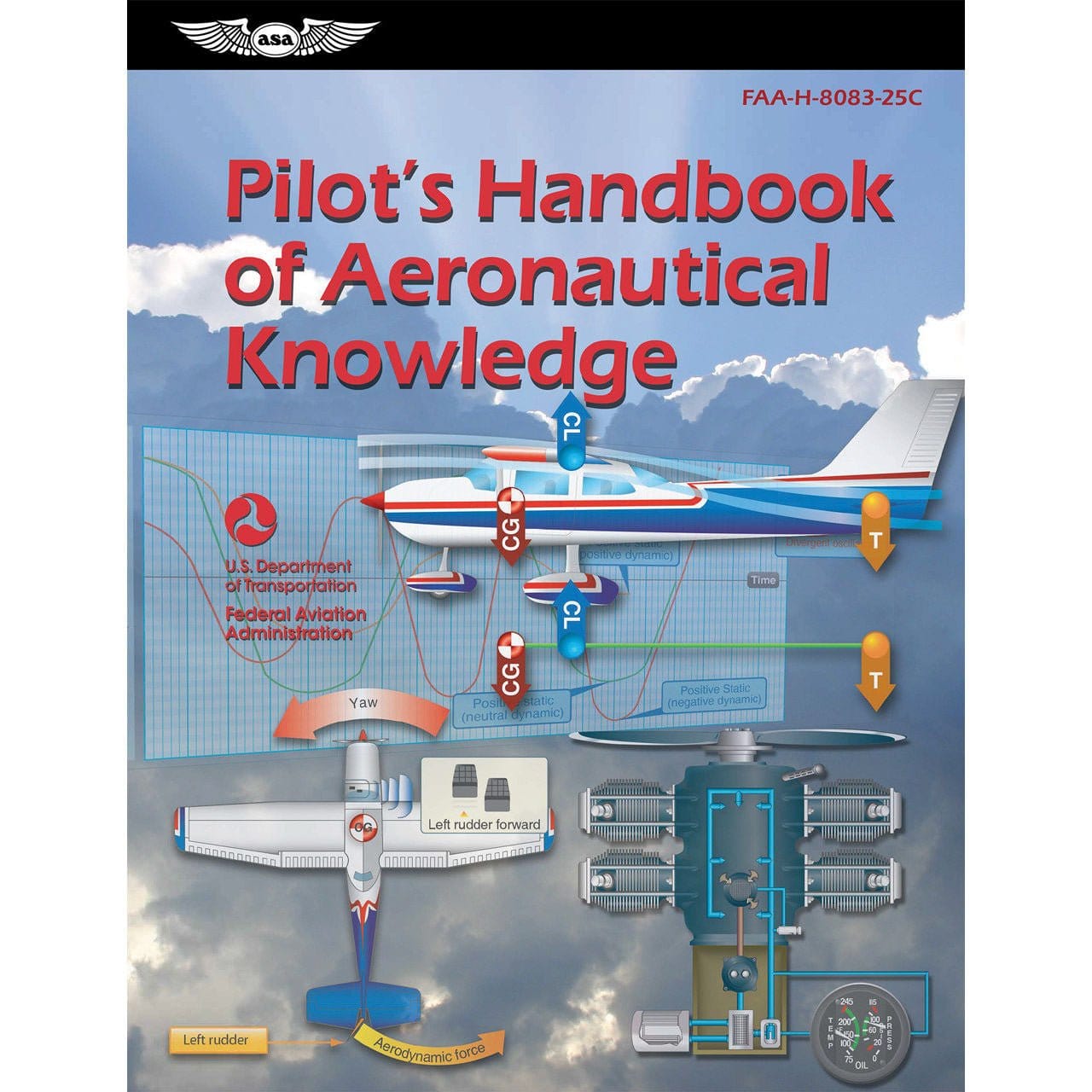Visually stunning and filled with deadly power, thunderstorms are one of the most fascinating and dangerous weather phenomena you are likely to encounter as a pilot. Extreme weather conditions, such as thunderstorms, can greatly affect flights and flight schedules.
An estimated 40,000 thunderstorms pop up around the globe on a daily basis, so your odds of having to deal with one are reasonably high. When this happens – think when, not if – you will be grateful for everything you have learned about flying in thunderstorms.
Of course, the best advice about flying in a thunderstorm is – not surprisingly – don’t do it. Thunderstorms can have extreme rains, lightning strikes, and strong winds. Improve your knowledge of how thunderstorms develop, your ability to read weather radar patterns, and your skills to avoid severe storms. Do that, and with luck, you may never find yourself flying through a thunderstorm and having to navigate such weather conditions.
Of course, we can’t count 100% on luck, so step two is to know what to do if you find yourself in a thunderstorm and how to get out of it safely and quickly. Modern aircraft are designed to withstand lightning strikes, but significant damage from other factors like hail and wind speed can still occur.
Keep reading for all this information plus answers to some of the most commonly asked questions about flying in and around severe weather.
 What Causes Thunderstorms?
What Causes Thunderstorms?
Let’s start off with a little basic meteorology. We have a general working knowledge of what a thunderstorm looks like, so let’s talk about how they develop. If you know what conditions give rise to thunderstorms (especially severe thunderstorms), you will be better able to spot the early warning signs when you see them.
3 Conditions that are necessary for a thunderstorm to form
A thunderstorm develops from a combination of 3 things. Take away any one of these variables and you may still have inclement weather, but you won’t have a thunderstorm.
- Moisture (Measured by the humidity level in the air)
- Unstable air
- Lifting force (can be caused by a wind, heat rising off the ground, electrical charge, air fronts)
Can Planes Take Off in a Thunderstorm?
Air traffic controllers play a crucial role in monitoring and managing flights during bad weather. In extreme weather conditions, they might delay takeoffs and landings to ensure the safety of passengers and crew.
 How to Avoid Thunderstorms
How to Avoid Thunderstorms
Let’s say you notice several thunderstorms causing adverse weather conditions are present in your area or on your flight path. What do you do next?
If you are on the ground when storm conditions develop, great. Stay there until the storm passes. If not so lucky and you are in the air when the storm develops, the first thing to keep in mind is that when avoiding a thunderstorm, the standard recommendation is to give it a berth of at least 20 miles. This is because turbulence and lightning can extend beyond the edges of the storm itself.
Hazardous In-Flight Weather Advisory Service
Check the latest broadcast from the Hazardous In-Flight Weather Advisory Service (HIWAS) to find out what dangerous weather conditions may have been reported in your area.
En Route Flight Advisory Service
You may also consult the En Route Flight Advisory Service (EFAS) and an FAA Flight Service Station (FSS) for specific information that will help you navigate around the storm.
ATIS, ASOS and AWOS advise on weather conditions at each airport, so remember to consult with them as well. The FAA has several in-flight services available to pilots.
You will need to know the current and predicted flight conditions at your originating and destination airports plus what flight rules apply along your proposed flight path before you can make an informed decision.
Remember, sometimes thunderstorms can hide inside a cloud and you will be unable to see these embedded thunderstorms until you are right on top of them. Learning about cloud types and formations can help you spot potential rising weather conditions as well.
Which brings us to…
 What Happens if You Fly into a Thunderstorm?
What Happens if You Fly into a Thunderstorm?
Fasten your seatbelt – it’s time to talk about the worst-case situation. Let’s say you were unable to avoid a thunderstorm and you end up flying into it. What should you expect?
According to a publication released by the National Weather Service:
"All thunderstorms can produce severe turbulence, low level wind shear, low ceilings and visibilities, hail and lightning—"
Visibility will be limited, and if it is nighttime and you see flashes of lightning, that will degrade your night vision. You will experience wind shear as well as updrafts, downdrafts or a combination of both. This depends on what stage of formation the thunderstorm is in.
We recommend checking out the FAA's FAQs regarding weather such as thunderstorms.
 How to Get Out of a Thunderstorm
How to Get Out of a Thunderstorm
The first thing to do if you find yourself in or dangerously near a thunderstorm is to slow down to maneuvering speed for your aircraft. The strong fluctuations of the storm’s vertical forces will be less likely to damage your aircraft if you are flying at a reduced speed.
Turning around is not advised because the maneuver increases already heightened structural stress on your aircraft that flying in a storm can often cause.
Avoid the temptation to fly under a thunderstorm even if you have good visibility. Remember that turbulence is usually the worst below the cell. To help protect your vision from temporary blindness due to lightning, keep your eyes on your instruments.
 Answers to Your Severe Weather Questions
Answers to Your Severe Weather Questions
Time to field some of the most common and burning questions that new pilots and the general flying public have about how severe weather affects aircraft.
Do planes get struck by lightning?
Yes, commercial planes are designed to withstand lightning strikes. For commercial jets, the FAA has estimated a likelihood of one lightning strike per 1,000 flight hours, or an average of once a year. In theory, your odds of a lightning strike is lower in a small aircraft, although there are fewer hard numbers to back this up.
What are the effects of lighting strikes?
The effects of a lightning strike depend on the size of the plane and whether it has been shielded and designed to withstand a lightning strike.
The aluminum skin of a passenger jet keeps the current restricted primarily to the outside of the aircraft. A lightning protection engineer also installs shielding, grounding and devices to suppress surges that could otherwise damage the plane’s electrical equipment.
The FAA also has regulations in place to ensure manufacturers of critical aircraft components build their products to withstand a lightning strike.
Can you fly over a hurricane?
The short answer to this interesting question is “no.” The longer answer is that for commercial aircraft, it does depend a little on the size of the hurricane and the situation, but for the most part, the answer is still “no.”
While you may fly over the very outer bands of a small hurricane in an emergency, the wind shear and extreme vertical height of a hurricane (up to 50,000 feet) make it virtually impossible to fly over a fully developed, category 4 or 5 hurricane.
 Key Takeaways
Key Takeaways
The best action to take when it comes to aircraft and thunderstorms is to keep the two separate. Know the conditions that can lead to storm development and avoid flying in the area of known thunderstorms if possible.
Remember to maintain a minimum of 20 miles from known thunderstorm activity. Consult all your available weather resources for the most up to date information when planning your flight.
If you do find yourself in a thunderstorm, follow best practices to get through the situation. Slow down to maneuvering speeds and avoid turning around. Disengage auto pilot and maintain attitude control. Consult flight following services for course guidance.
The best action you can take is to learn, plan and train so that you are prepared for whatever weather situation you may encounter.
Learn More About Aviation Weather
Want to know how to avoid turbulence? Or maybe you might want to learn about SIGMETs? Do you know what Volcanic Ash advisories are? Check out our guides to learn everything there is to know about aviation weather!
-
Ditch the Rough Ride: How to Avoid Turbulence (And What to Do if You Can’t)
-
7 Types of Turbulence Every Pilot Should Know (What Causes It)
Did you find this article helpful?
Do you think we missed anything important? Let us know in the comments below!







